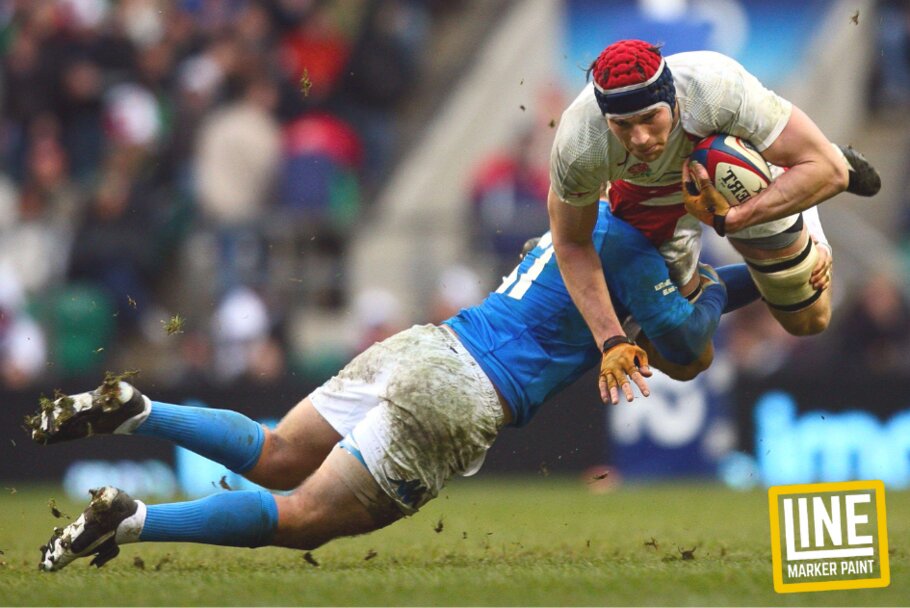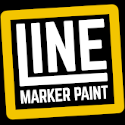The Dimensions of a Rugby Pitch

INTRODUCTION
According to the sports lore, from the whimsical moment in 1823 when William Webb Ellis decided to pick up the ball and run with it, Rugby Football was born.
Characterised by brute physicality, sheer skill and teamwork above all, rugby has flourished into one of the most popular sports to date, enjoyed by every gender and nationality. The Six Nations Championship is spectated by millions each year, with the energy from players and passion from fans creating an electrifying stadium and a game not worth missing.
Part of the charm of rugby is its diverse and inclusive nature. It is a game for all shapes and sizes, as you'll often see the broadest of the team taking on three players at once whilst the slightest slips down the wing to victory. Yet, all players have one important thing in common: a deep respect for the game and regard for the rules.
So, from grassroots games to world cup finals, it is crucial that the pitch dimensions and markings are perfectly precise. Whether you are a groundsperson, or an avid fan interested in the technical aspects of the game, it is always worth knowing the line dimensions of a rugby pitch to ensure a fair game.
OVERALL DIMENSIONS
It may come as a surprise that Twickenham Stadium, the home venue of England Rugby is larger than Wembley, England's football counterpart. The entire playing area measures up at 8,750m²: a whole 1,505m² bigger! As set by World Rugby, the acceptable length of a rugby league playing field can range from 94 to 100 metres in length, whilst the width can range from 68 to 70 metres. Though there is less room for variation in terms of width, the full playing area can measure up to an additional 6 to 22 metres on each side when accounting for the touch-in-goal area.
.png)
TOUCHLINES
Often referred to as the sidelines, the touchlines run parallel to each other from goal to goal, stretching the entire length of the pitch. Including the touch-in-goal lines which mark the boundary of the in-goal area, the lines must run at least 70 metres apart to provide clear and accurate boundaries of the playing area.
Estimation: With a standard Zebra Grass Line Marking Machine, approximately 0.89 litres of paint would be needed for two touchlines.
GOAL-LINES
Also known as the try-lines, the goal-lines are marked along the shorter side of the pitch, with the goal posts situated in the middle of both lines. The precision of these lines is paramount to ensure fair play, as a try is awarded if the ball is grounded on, or placed behind the try-line. The length of these lines should match the width of the pitch, as they are perpendicular to the touchlines, typically ranging between 68 to 70 metres.
Estimation: With a standard Zebra Grass Line Marking Machine, approximately 0.54 litres of paint would be needed for two goal-lines.
HALFWAY LINE
As the name suggests, the halfway line is the central line that bisects the pitch, separating it into two halves. Gameplay begins at the 0.5m centre cross, marking the gathering point for both teams at the start of the first and second half, plus in restarts, such as after a try or a scrum. The halfway line also serves as a reference point for determining offside positions during scrums, rucks and mauls.
Estimation: With a standard Zebra Grass Line Marking Machine, approximately 0.28 litres of paint would be needed for the halfway line.
DEAD-BALL LINES
The dead-ball line marks the end of the pitch, situated between 6 to 22 metres behind the goal-lines, with the space in between forming the in-goal zone. If the ball is kicked or rolls beyond this line, then play is halted. This awards an advantage to the opposing team, in the form of a scrum or a drop-out on the 22-metre line. The dead-ball lines form the width of the pitch between the two touchlines, measuring up to 68 to 70 metres.
Estimation: With a standard Zebra Grass Line Marking Machine, approximately 0.55 litres of paint would be needed for two dead-ball lines.
22-METRE LINES
Situated 22 metres away from the goal-line on either side, the 22-metre line plays a crucial role in defining certain aspects of the game. The solid white line is a reference point for restarting play with a dropkick, or for taking a penalty kick. Players can kick the ball into touch from behind the 22-metre line, whilst the line-out is marked at the point that it crosses the touchline. The game will then restart at the point at which it went out of play.
Estimation: With a standard Zebra Grass Line Marking Machine, approximately 0.54 litres of paint would be needed for two 22-metre lines.
DASH LINES
The 10-metre dash lines run 10 metres away from the halfway line on either side. The 10-metre line is significant during kick-offs, as the ball must travel at least 10 metres when kicked from the halfway line, whilst the opposing team must retreat behind this line until the game commences. These lines run parallel to the 22-metre lines and the goal lines, with each individual dash measuring up to 5 metres long.
The 5-metre dash lines are a set of two, situated from the touchlines and goal-lines. During lineouts, the ball must reach the 5-metre dash line running parallel to the touchline before it is played. The 5-metre dash lines running parallel to either goal ensures safety and fairness, as the markings prevent a scrum from taking place within 5 metres of the goal-lines or touchlines.
The 15-metre dash lines run 15 metres from the touchlines. These lines are used as reference points during throw-ins, as players must be positioned at least 15-metres from the touchline, adding tactical strategy and adrenaline-charged anticipation.
Estimation: With a standard Zebra Grass Line Marking Machine, approximately 1.08 litres of paint would be needed for the all dash lines and various dash marks.
MARKING THE LINES
Everything you will ever need to successfully mark a rugby pitch is available from our wide array of products. Browse our line marking machines, accessories and paints, including our fantastic section dedicated to Sports Ground Line Marking Paint.
Zebra Paints is one of the most popular choices, providing a professional-grade field marking solution, transforming any turf into an official pitch overnight. Zebra's unique patented paint formula is brand-beating, containing a higher concentration of pigment solids than its competitors. You can expect crisp, white lines that are visible from the furthest spectator seat in any weather.
Try out our new line marking paint calculator for an estimate of how much paint you will need for your specific field size. If you wish to seek professional assistance in line marking, our team of experts is available to provide guidance and ensure precise application for the perfect pitch. We are happy to help over the phone or via Live Chat.
